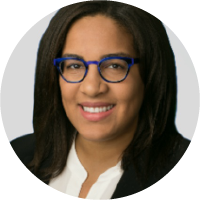by Katy Knight
In my role as SFE’s Executive Director, one of the core philosophies that I ask our team to keep top of mind is the belief that “context is key.” This series of Insights examines the many different lenses through which we understand context and the conditions in which an organization works.
In our ongoing series on the importance of context in grantmaking, we’ve already explored a few lines of inquiry that we use to develop a more thorough understanding of the teams who do the work at a given organization. But what about the communities where that work takes place? How can we as grantmakers cultivate a deeper appreciation for the broader, location-based context that informs an organization’s work, and help other funders ask the questions that will help them create grantee partnerships that reflect local and regional nuance? And in cases where we’re interested in engaging with a new place, how can we responsibly source partners in communities that we don’t have direct experience with?
Our inquiry-driven approach tells us that the best way to understand our role in a grantee relationship is through constantly asking ourselves challenging questions. It’s a process that sets us up to provide grantees with targeted, strategic funding and thought partnership that reflects the conditions where they work. These are some of the questions that we ask ourselves throughout the relationship building process in order to better understand important details about where the work is happening:
- What are we talking about when we refer to a place? It’s important to start from a place of understanding what an organization considers as their geography. No matter the scale of an organization’s focus, it’s important to bear in mind what’s happening in the surrounding environment. For instance, SFE grantee Sunset Spark runs tech education programs focused within the Sunset Park neighborhood of Brooklyn, and we see it as our duty as funders to understand the factors that most impact the tightly targeted community they serve in order to understand how they might do their best work. However, we can also help to better contextualize their work by staying actively engaged with the developments at the borough, city, and regional levels that may impact it. We strive to be aware of how our position as a funder informs our partnerships, and recognize that while our proverbial 30,000 foot view isn’t grounded in the same local context as more targeted work, it can provide helpful balance.
- What’s drawing us to a certain location or community? Sometimes, we find ourselves exploring work in a new region or geographic context because we’re following the lead of an appealing organization, and need to evaluate the regional context where they work. Other times, though, we do the opposite, and are drawn to a place because we recognize a unique opportunity, and need to find the right partner or organization to help realize its potential. We’ve created partnerships with community foundations and local philanthropy with deep roots in places where we want to scale targeted projects in order to implement a broader vision more easily within a specific locality. Examining the motivations that bring us to a place or partnership is most beneficial when you also communicate them to your partners, and we stand to do better work, and be more accountable to shared objectives, when grantees and partners have clarity about how we got there in the first place.
- What is philanthropy uniquely positioned to offer in a given region or community? We never want to act like outside experts or impose a way of doing things in a community that we don’t understand fully. As grantmakers, we have a responsibility to take the time to understand how philanthropy is received in the places where we work, and to be sensitive to the role that we play in a community or region’s economic advancement. I’ve learned a lot from local philanthropy organizations, like community foundations and regionally targeted philanthropy, about considering community perspectives and building authentic, organic relationships. There are always going to be scenarios where we’re perceived as outsiders with a much broader imperative, but applying these lessons from our locally-based partners honestly can help us provide support that matches the needs of communities, and honestly reflects the places where we want to do good work.
These questions are a critical piece of our relationship building process, and we’ve tried to ensure geographic diversity across our grantee community. Understanding the role that regional context plays in informing a grantee’s work positions us to provide more impactful support that can generate better outcomes within the communities our grantees serve, and it’s our hope that these questions can help our peers in the philanthropic community to do the same.

Katy Knight is the Executive Director of Siegel Family Endowment





